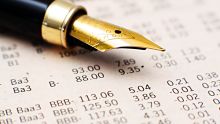
Convertible bonds occupy a distinct space in the investment spectrum, combining characteristics of corporate credits and common equities. “You have a hybrid instrument where you can derive returns from bullish views on credit and equity. That is an unusual situation: to be able to benefit from both areas,” says Michael Reed, a senior portfolio manager and partner at London, England-based BlueBay Asset Management LLP and lead manager of the $1.26-billion BlueBay Global Convertible Bond (Canada) Series A.
At the same time, convertibles also provide the capital-payback features of a corporate bond. “If you get your equity timing incorrect, you will benefit from features such as the principal redemption amount, which is something you don’t get with equities. It’s the best of both worlds,” argues Reed, adding that downside volatility is reduced due to the principal-protection feature. “They allow you to benefit from both the pick-up in credit spread over the risk-free rate and the equity upside.”
Today, convertible bonds have a role to play, especially when interest rates are poised to rise in the U.S. Reed expects such a move in December, which will cause government bonds to suffer duration-related losses. High-yield bonds will also experience some duration loss, but Reed notes that they will be compensated by credit-spread tightening. He argues that convertibles tend to be under five years in duration and thus any duration-related losses will be small, but convertible bond prices will actually rise due to rising equity markets and improving credit spreads.
“Growth is good for credit spreads and equity markets,” says Reed, who believes the rate hike will come as the U.S. Federal Reserve responds to a growing U.S. economy. “And if equity markets rise and credit spreads tighten, those are very strong drivers for returns of convertible bonds,” says Reed, a former engineer and 26-year veteran of the financial-services industry who joined BlueBay in 2007. Founded in 2001, the firm is a subsidiary of Royal Bank of Canada and manages more than US$60 billion.
Even though inflation and wage growth are muted, Reed expects that the Fed will gradually raise rates through 2016 to about 1%. That is still a long way below the long term average of 2.5% for the so-called real rate (after inflation), which determines the attractiveness of the asset class. “If you go back 50-60 years,” says Reed, “you will see, in the 12 to 18 months subsequent to the first rate rise, strong performance by the S&P 500 Index and a considerable tightening of credit spreads.”
Reed adds: “That makes sense because the Fed is saying there is growth out there and is responding by raising rates. So we’re in a fairly golden period where rates can rise, as the Fed puts the brakes to the economy, just slightly. The last thing it wants to do is jack up rates and kill the economy.”
Taking a historical perspective, Reed notes that while U.S. government bond portfolios saw 5% losses or more in 1999, 2009 and 2013, convertible bonds had double-digit positive returns. “Even if you go back to 1994, which saw a lot of volatility and was a shocking period for bonds, convertibles still saw small positive returns.”
The BlueBay fund holds about 180 names, selected from a universe of 2,000 securities valued at US$500 billion. Single portfolio holdings are limited to about 2%.
Attributes that Reed looks for in an issuer include risk-return profiles that offer upside potential versus the risk-free rate, capital protection, and potential for growth and equity-like returns. “We’re trying to get equity upside but with much lower volatility,” says Reed, adding that convertibles tend to have about 50% of the volatility of equities.
A bottom-up investor, backed by four analysts dedicated to convertibles, Reed has allocated about 80% of the fund to developed markets and 20% to emerging markets. More than half the portfolio is rated BBB or lower.
One favourite name is Intel Corp., the global semiconductor manufacturer whose bond is A-rated. “The balance sheet is very strong so we have considerable protection to the downside,” says Reed. “From an equity perspective, it’s also interesting because there is a lot of M&A going on.”
Moreover, the industry is more disciplined than in the past, he says, with a greater focus on return on capital. “This will allow margins to stay higher for longer and support the overall market.” While the stock has recovered from losses in the summer bear market, the bond is generating a running yield of about 2.5%.
Looking ahead, Reed expects conditions to remain benign as real rates are unlikely to trend very high. “What is different from this cycle, from others, is that because of the depth of the financial crisis in 2008-09, this will be very long and drawn out,” says Reed. “Everything is happening in slow-mo. This can be a much longer economic cycle than previous cycles.”
Speed bumps will arise, as occurred in the third quarter. “That’s what you need along the way,” says Reed. “But that allows the market to attain some reasonably stronger footing and move higher. That applies to both equities and credit and, by extension, convertibles.”